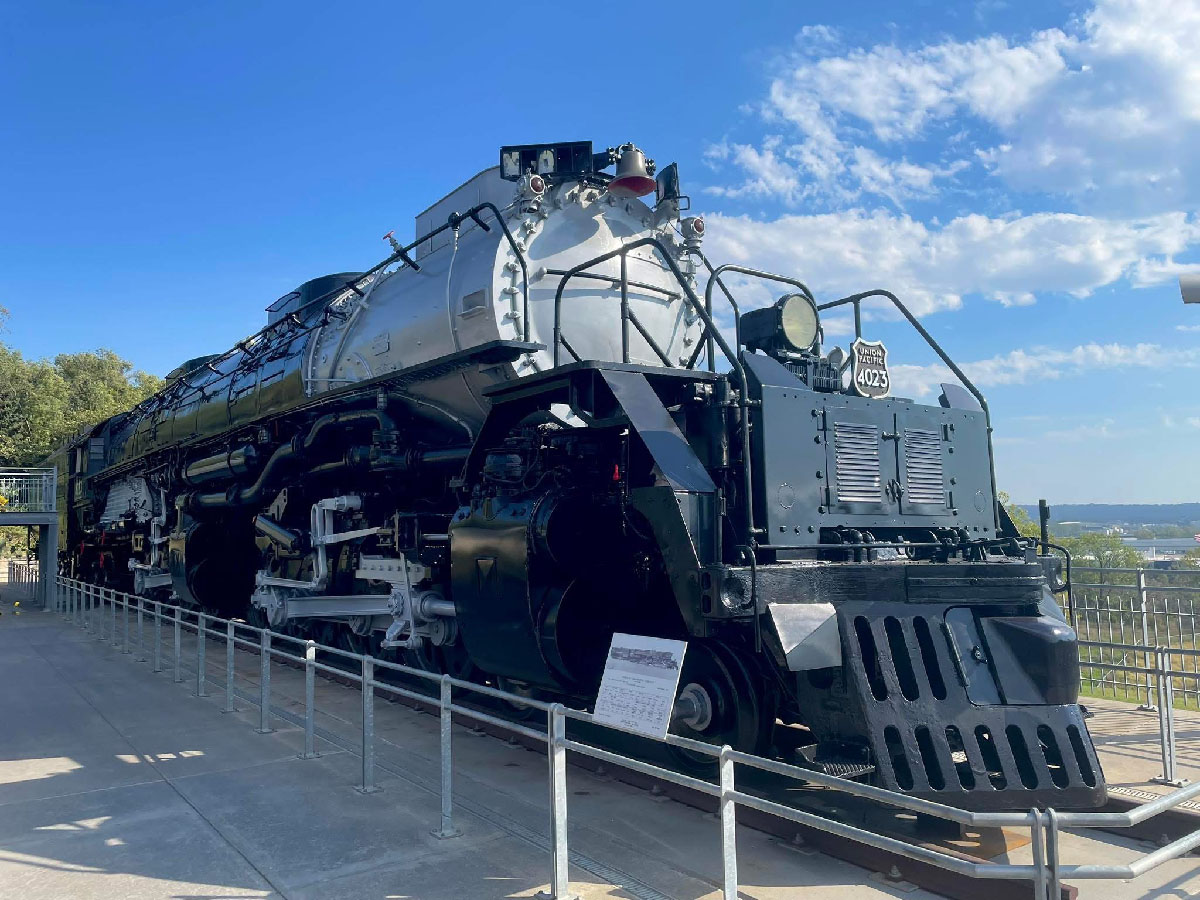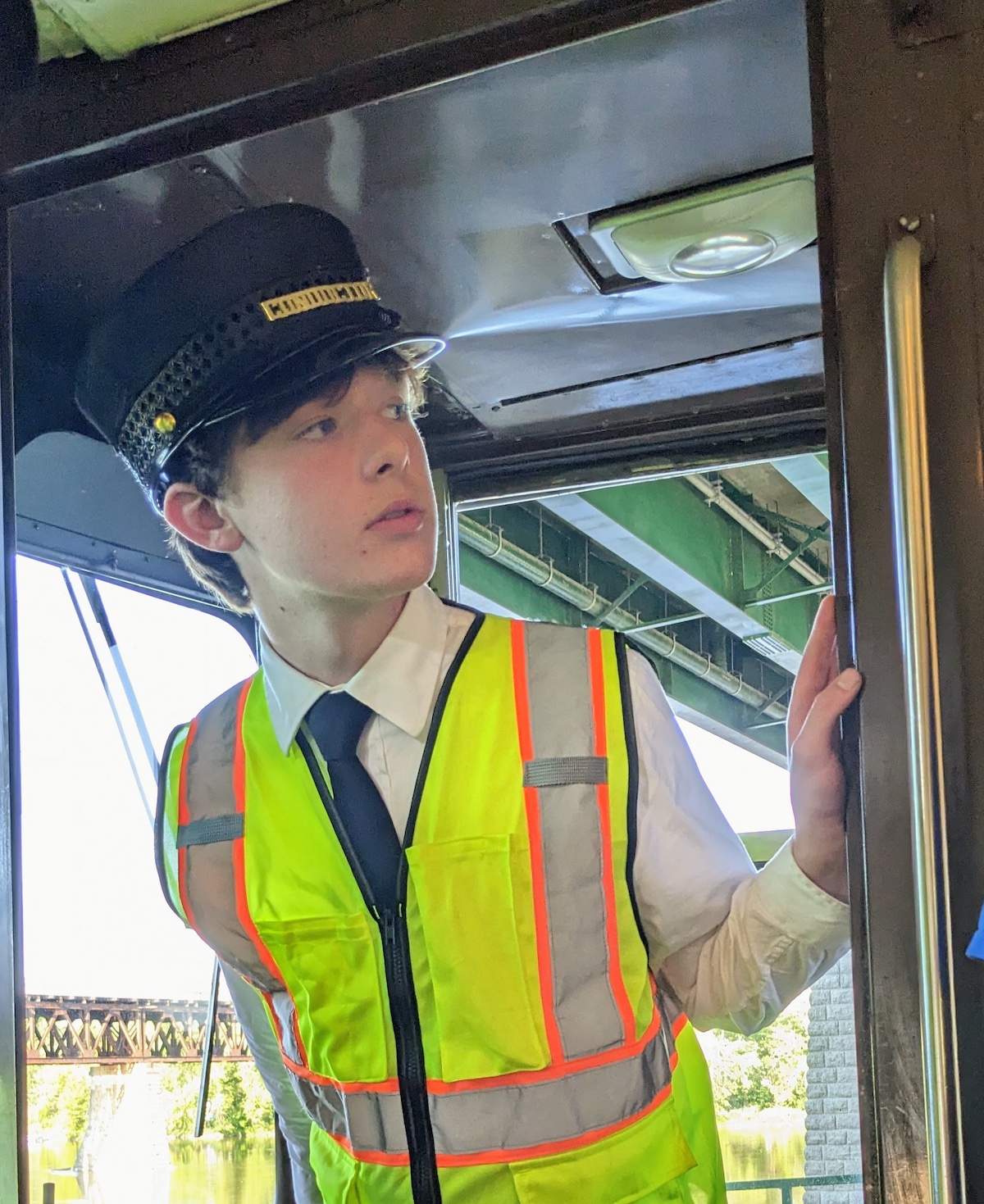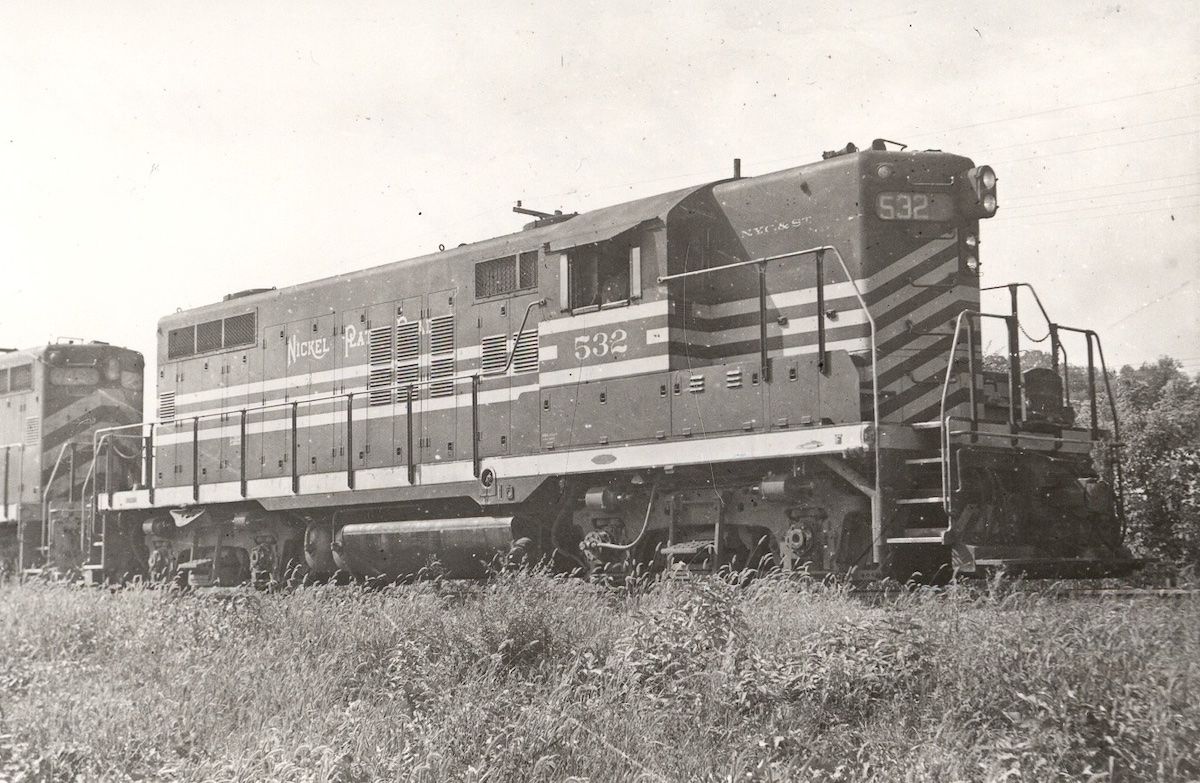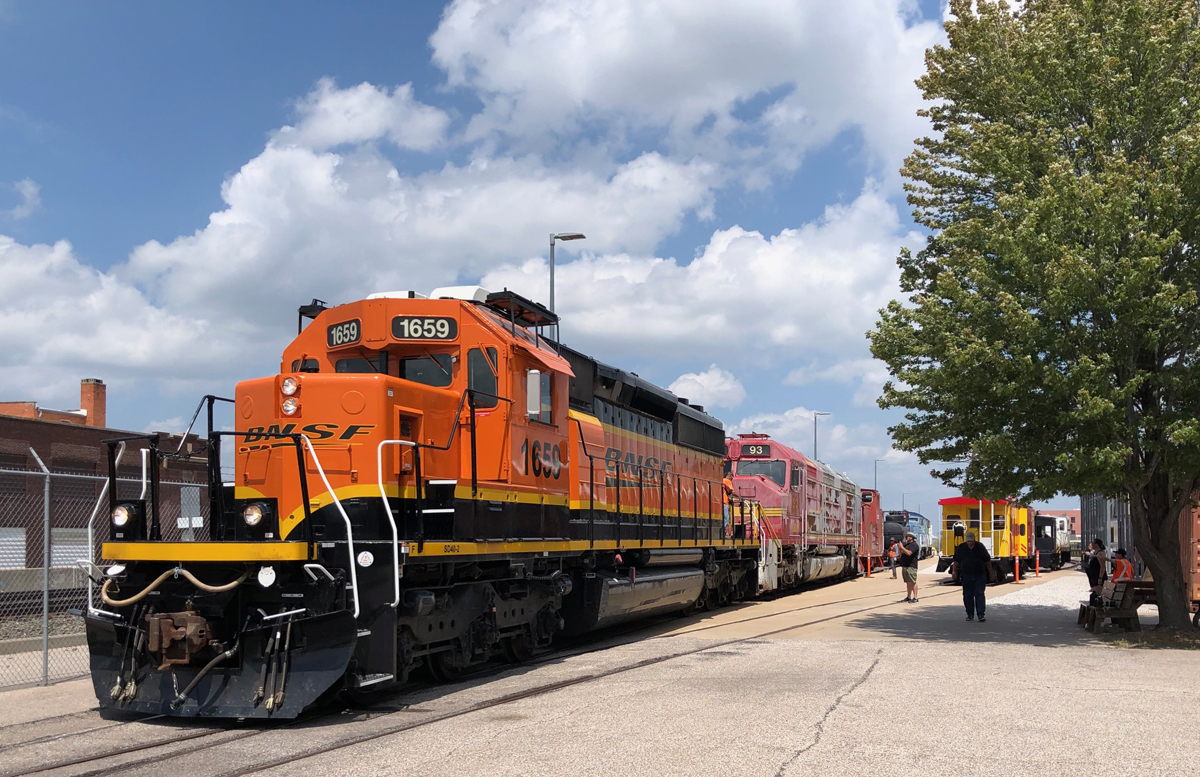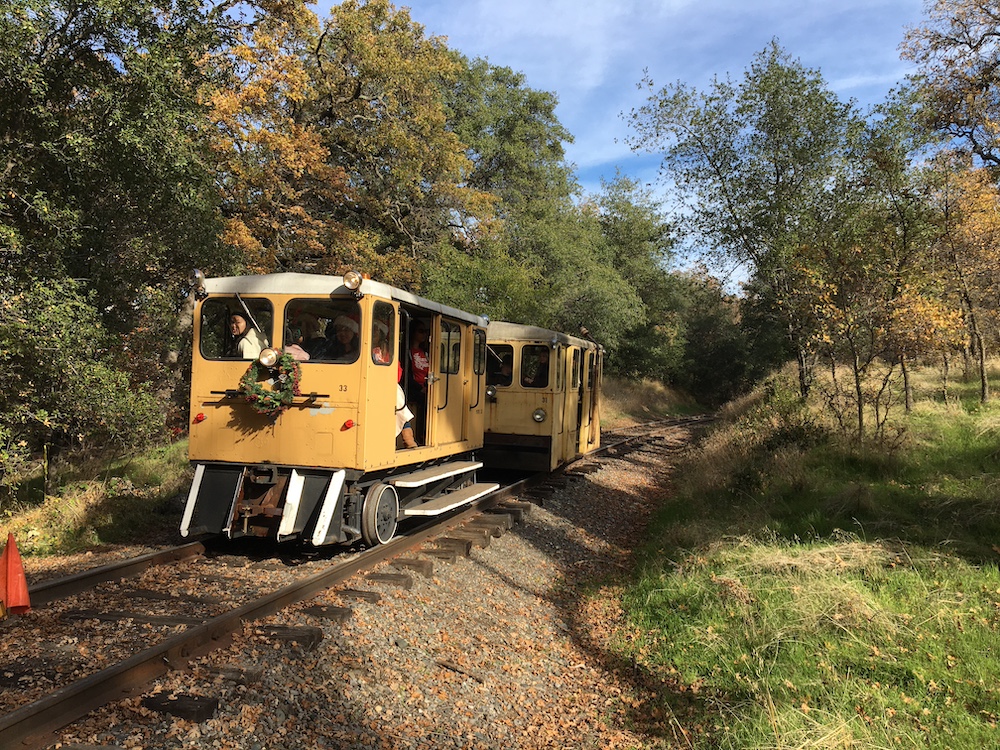
If history had played out differently, our motorcar ride this summer day in the wooded foothills of California’s Sierra Nevada would instead take place aboard Amtrak’s California Zephyr, instead of on Fairmont “track speeders.” The track would belong to Union Pacific, not a joint-powers authority. It’d be home to stack trains and AC engines.
That’s because this route that eventually became Southern Pacific’s Placerville branch — or a segment of this route, at least — would have been part of the first transcontinental railroad.
Before Theodore Judah was chief engineer of the Central Pacific Railroad, he helped build the Sacramento Valley Railroad from Sacramento to what became the city of Folsom. The 22-mile line opened in 1856 as one of the first railroads west of the Mississippi River, and Judah believed it could be the start of a route over the mountains.
That didn’t happen, of course. Instead, Judah chose a more direct route from Sacramento to Donner Pass for the CP, creating one of the enduring main lines of the West. The Sacramento Valley lived on as a local operation that eventually became the western end of SP’s 60-mile line to Placerville, completed in 1888.
Although Southern Pacific stopped regular operations east of Folsom in 1986 and sold the entire line a decade later, the story continues. Except for the last few miles into Placerville, the tracks are mostly intact and partly active. Today’s route offers variety — freight, electric transit, recreational rides, diesel, steam, motorcars, and handcars, in settings urban, suburban and different kinds of rural.
Come along for a visit. Many more visitors might follow you someday. A railroad museum park is in the works, and longer rides offering scenic views of the Sacramento Valley are a goal. This area of California continues to grow, the California State Railroad Museum in Sacramento already draws visitors to the region, and there are several ideas for how to use this track.
Although this line never crossed the Sierra Nevada, it still has possibilities.
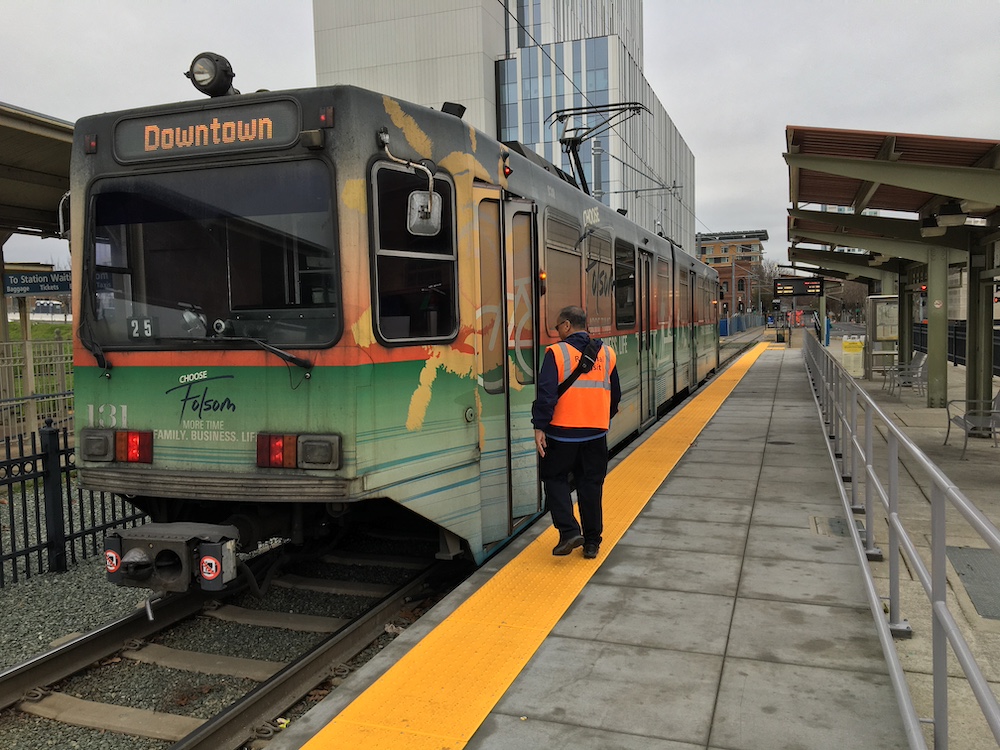
The Route of the … well, of lots of things
We’ll begin with a list of current operations, starting in Sacramento.
- Union Pacific, which acquired the SP in 1996, still operates the segment from Sacramento to the end of track in Rancho Cordova at a place called Nimbus, west of Folsom. The railroad calls it the Placerville Industrial Lead. A weekly freight served four customers as of early 2024.
- The Sacramento Regional Transit District’s Gold Line from Sacramento to Folsom shares the UP right of way for much of its distance. Light-rail electric trains run frequently.
- In Folsom, the Placerville & Sacramento Valley Railroad takes over. This volunteer nonprofit has a storage yard in old Folsom and has operated motorcars and/or trains on parts of its route since 2010. In December 2023 the P&SVRR was running motorcar rides on a woodsy part of the line inside Folsom, taking kids and families to visit Santa and Mrs. Claus encamped in former Cotton Belt caboose No. 48.
- Uphill, once the line crosses from Sacramento County into El Dorado County, the track becomes the territory of the El Dorado Western Railroad, also run by volunteers and overseen by the El Dorado County Historical Museum. They offered motorcar rides on most Sundays during 2023.
The Sacramento-Placerville Transportation Corridor Joint Powers Authority bought the route from Brighton (a point in Sacramento on UP’s Fresno Subdivision) to Placerville from the SP in 1996, to preserve the branch and to support compatible transportation. The authority comprises Folsom, the two counties, and the transit district. The SP kept a freight easement to Nimbus.
The EDW and P&SVRR connect physically, although the connecting track is inactive. The P&SVRR and the light-rail line in Folsom do not connect, which means the two heritage railroads are isolated from the national rail network. Bike paths and trails provide another reason to keep the corridor intact.
Motorcar rides in the foothills
The El Dorado Western currently has permission to operate on 8 miles of track from Shingle Springs east to Diamond Springs, where the rails end at Missouri Flat Road near Placerville. It began offering rides in 2011. During 2023 it carried passengers on motorcars out and back from two locations — El Dorado and Shingle Springs. Storm damage affecting the Slate Creek bridge between the two towns prevented the speeders from running on all 8 miles.
The El Dorado segment was operating on the Sunday when we visited in August 2023. Passengers boarded at the scaled-down replica of an SP station, then rode out on a 3.8-mile round trip. We hit a top speed of 10 mph on rails that pass through woods, along a bike path, and behind rural homes. Volunteers flagged the few crossings. Near the eastern end of the line, the consist simply paused and reversed direction, aided by the grade. The ride is easy, pleasant, and lasts about 35 minutes.
Jan Breitigan, an EDW volunteer since 2018, was the operator for our outbound leg. He enjoys chatting with visitors. “I’ve been a land surveyor, and I’ve enjoyed seeing where the trains used to go,” he added. “Anything to do with trains, I’m interested.”
The ride from Shingle Springs is similar and passes through a deep cut that was once a tunnel. People board next to a restaurant whose building includes the surviving freight side of an SP depot built in 1896.
The speeders we rode from El Dorado had room for about two dozen passengers, plus crew. By late morning, the day’s runs were selling out.
“We have a couple of thousand visitors a year, mostly from the region, Sacramento, and San Francisco area,” said Mary Cory, administrator of the El Dorado Museum and general manager of the railroad. “We do get quite a few return visitors, family outings on Sunday, and multi-generational groups.”
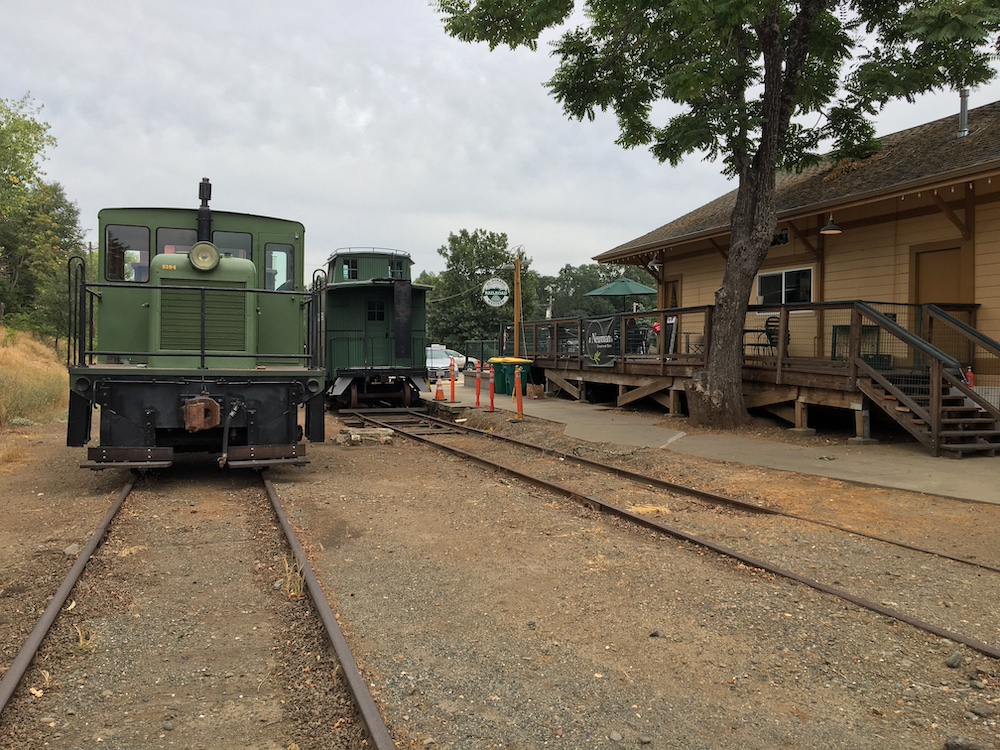
A museum with a narrow-gauge Shay
The El Dorado Western plans to attract more visits. One goal is to build the El Dorado County Railroad History Center and Park in El Dorado, to display the museum’s equipment and artifacts. These include a Shay that volunteers are restoring, No. 4 of the Diamond & Caldor Lumber Co., a vanished narrow-gauge logging road that connected to the branch in Diamond Springs.
The EDW intends to run full-sized trains from its El Dorado station in 2024, powered by its Plymouth JDT No. 1 (1952, Certainteed Products). It also owns 44-tonner No. 5104 (GE, 1943, Pacific Coast Aggregates) and 65-tonner No. 881-002 (GE, 1941, Kaiser Cement). Both GE engines can be operated and just need some restoration, Cory said.
The tracks from Shingle Springs east also need to be restored or repaired before the railroad can run locomotives east of the Shingle Springs yard.
“EDW volunteers work with me to maintain all 25 miles of track within El Dorado County,” Cory said.
“The priorities and amount of work achieved depends on volunteers and money,” she said. “We have this wonderful group of volunteers. They’re very dedicated and committed. Every year [at a meeting] I meet with as many as can come, and we talk about goals for the next year. We’ve worked out that projects need to be approved by the group, by consensus.
“It’s very rewarding for me when I can have everyone talking about what they’d like to see done, and to be able to organize that, on things that’ll get us moving ahead on full-size train operations,” Cory said. “You want to respond to their effort, time, and skill. I also don’t want many projects we can’t accomplish.”
The two heritage railroads evolved separately. They grew from two different visions, Cory said, but share an overarching interest in preserving and using the rails.
“Our group up here has been very focused on El Dorado and Shingle Springs. That middle stretch from Shingle Springs to the county line or Latrobe has multiple issues [that need to be addressed] to make it usable,” she said. The issues have included opposition from property owners who don’t want trains nearby, plus paved-over crossings, storm damage, and the condition of the track.
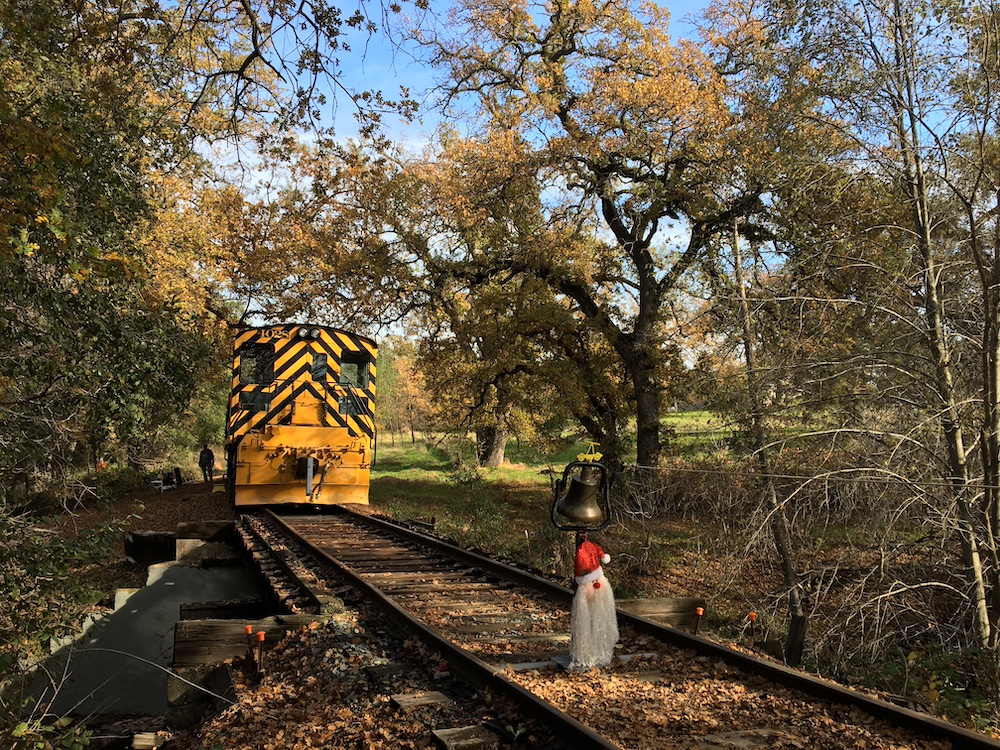
Handling growth in Folsom
The Placerville & Sacramento Valley has three basic operations: motorcar rides within Folsom; short trains uphill from Folsom to the El Dorado County line; and motorcars further on to Latrobe, a former railroad town of about 200 people in El Dorado County (EDW grants track warrants for use of the rails). The in-city motorcars leave from P&SVRR’s Oak Station, and the uphill runs depart from the railroad’s Hampton Station, near Highway 50.
Washouts and construction made the uphill runs impossible in 2023, but the P&SVRR plans to resume them in 2024 after repairing storm damage.
The P&SVRR’s tracks also host the annual Folsom Handcar Derby, run by the separate Folsom, El Dorado and Sacramento Historical Railroad Association.
The P&SVRR’s roster includes:
- 4028, a working, former U.S. Army RS-4-TC Baldwin switcher built in 1954, later owned by Heber Valley Railroad in Utah.
- Ex-Santa Cruz Portland Cement No. 2, aka the Chiggen, an 0-4-0T built by H. K. Porter in 1909 and on long-term lease from Efstathios Pappas. In 2022, after completing the engine’s annual inspection, P&SVRR crews ran it on short test runs, marking the first time a steam engine had operated on the former Placerville branch since 1957. They plan to use it to pull public rides in 2024.
- Howard Terminal No. 8, a 44-ton diesel-electric built in 1943 for the Army by the Whitcomb Locomotive Co. when it was part of Baldwin Locomotive Works. It’s currently out of service.
- A Skagit motorcar (undergoing repairs in 2024) that can hold 25, plus a trailer, speeders, open-air car, and the caboose.
Folsom has about 85,000 residents, up from 52,000 in 2000, and the city keeps growing. More people could mean more riders and volunteers. Eric Olds, vice president and chief of railroad operations for the P&SVRR, suggested the city could even consider using the tracks for a trolley to carry local traffic among the city’s new neighborhoods and retail centers.
The growth also threatens to crowd the railroad. In 2023, P&SVRR’s operations inside the city were limited by unsignaled grade crossings, and new housing has created four more crossings.
‘Everywhere we imagined we wanted to be’
The Placerville branch mostly carried fruit, finished lumber, and lime. Its demise followed the 1986 shutdown of the Camino, Placerville & Lake Tahoe Railroad, a connecting 8-mile short line owned by Michigan-California Lumber Co. and the source of most of the branch’s traffic.
Once that railroad quit, wrote Placerville writer and historian Doug Noble in his blog, SP filed to abandon the branch from Folsom to Placerville. After regulators refused permission, the railroad imposed a $750 surcharge per carload ($1,400 in 2024 dollars). Most remaining shippers reluctantly shifted to trucks.
The old right of way into Placerville now hosts a bike trail beyond Missouri Flat Road in Diamond Springs.
Videos of UP’s current operations on the Placerville Industrial Lead can be found on YouTube from posters like Aerial Trains and Railroads, and MobileRailSpotterRxR.
Once the UP’s tracks end, the light-rail line uses essentially the rest of the 1850s right of way into Folsom. A ride on the entire Gold Line to Folsom takes just under an hour and varies from urban street running in Sacramento to sprints of up to 55 mph on a separate right of way toward Folsom. Light-rail reached the city in 2005.
SacRT uses equipment built by Siemens and CAF. In 2024 the district is adding Siemens S700 low-floor vehicles. The district has bought 36 of the cars, and has up to 76 on its contract.
The light-rail line passes within several yards of the P&SVRR’s end of track in Folsom at the former Folsom Wye, before terminating another half-mile up the track in Historic Folsom. In Sacramento the Gold Line ends at the ex-SP Sacramento Valley station, where Amtrak stops, and within walking distance of the California State Railroad Museum.
How about trains all the way?
The big question is if trains could run again over the 34 miles from Folsom to Diamond Springs.
“Our goal is to run passenger service all the way to Shingle Springs,” said Chris Van Thull, development director for the P&SVRR. “Our normal trip from our Hampton station to the county line is 45 to 50 minutes. If you go to Latrobe, it will take 2 hours round trip. Shingle Springs could be a 4-hour round trip.”
“A train from Folsom to end of track would be a great thing to see,” said EDW General Manager Cory. “I don’t know if it’ll happen anytime soon. In the interim, we have plans for the railroad museum park, where we can put the Shay locomotive as it’s undergoing restoration and logging equipment.”
The grade crossing questions in Folsom would need to be resolved, inactive segments of track would need to be repaired, and there would need to be enough volunteers to do the work and money to pay for it all.
Most volunteer organizations face problems of labor, money, and endurance. There’s one additional quality that the builders of the Sacramento Valley Railroad might recognize among their 21st century successors. The P&SVRR’s Eric Olds named it.
“Potential,” he said.






